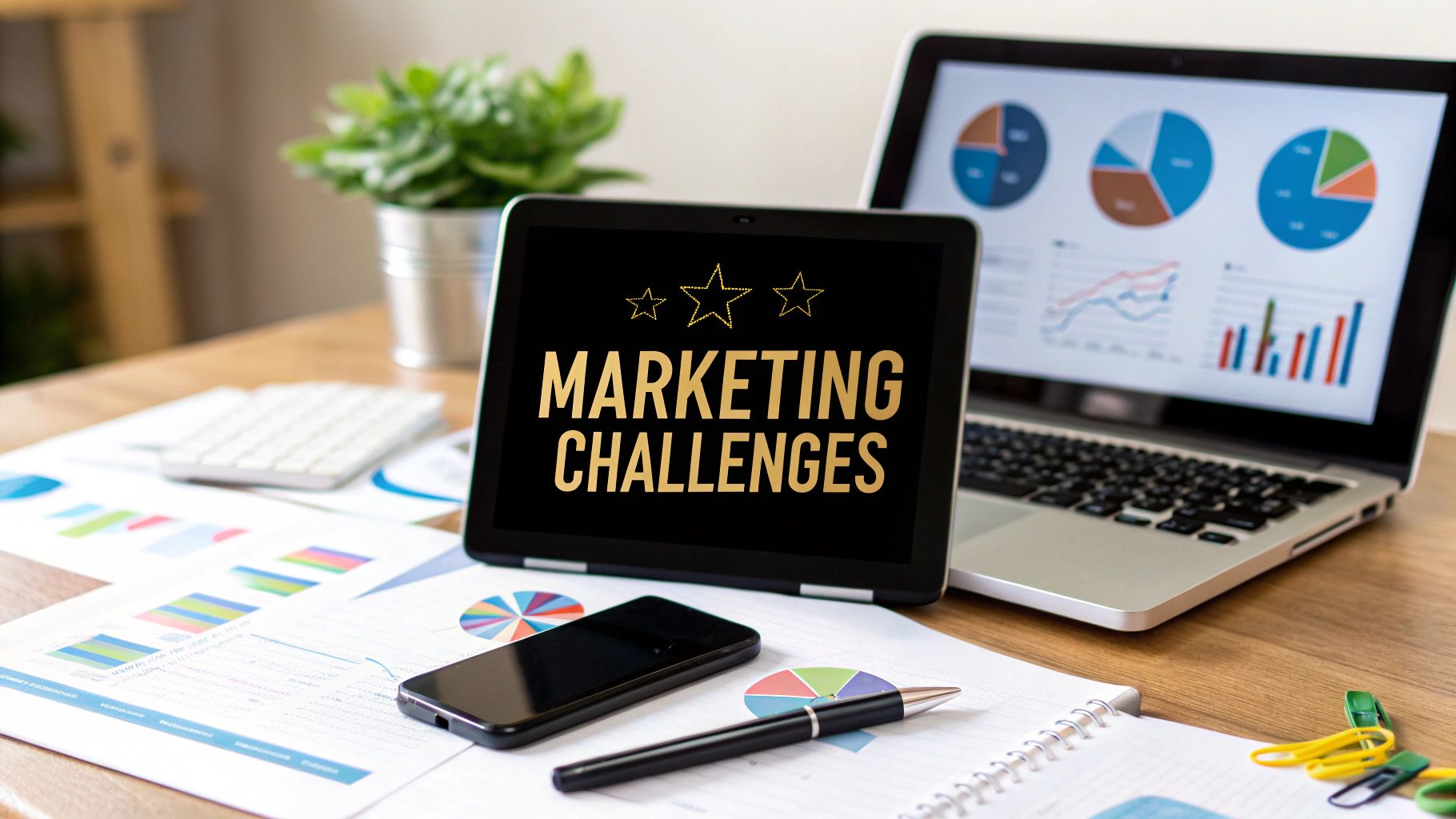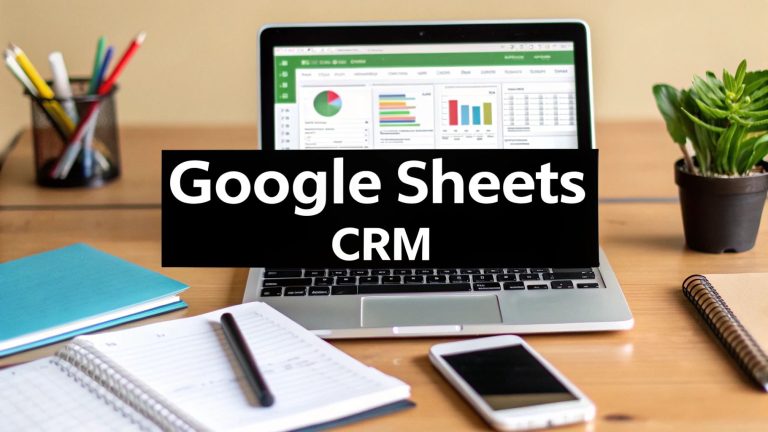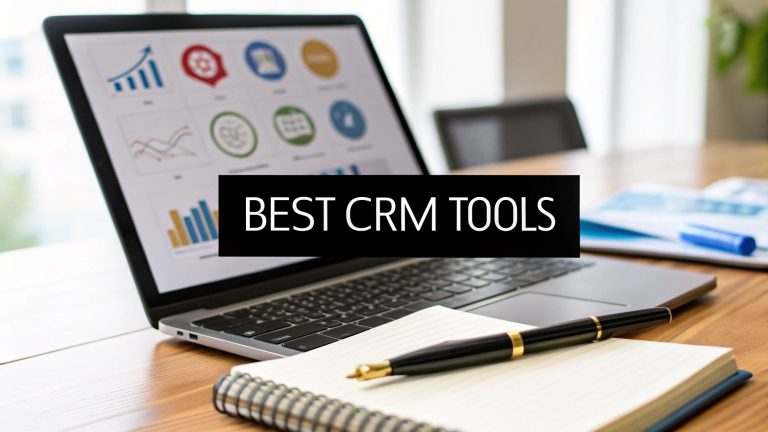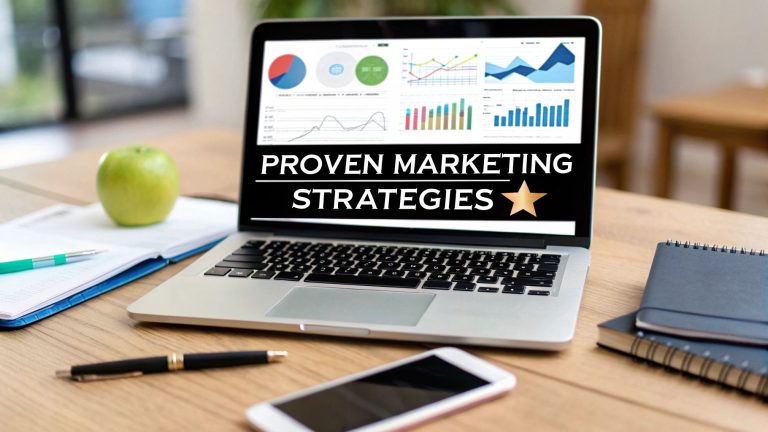7 Small business marketing challenges You Should Know
Running a small business is a masterclass in multitasking. From managing inventory and serving customers to balancing the books, entrepreneurs wear countless hats. However, one of the most persistent hurdles they face involves marketing. Without a dedicated team or a massive budget, navigating the complexities of promotion can feel overwhelming. This is where many promising ventures stumble, struggling to connect with their target audience and drive sustainable growth. The core issue often isn't a lack of a great product or service, but rather the difficulty in overcoming common yet significant small business marketing challenges.
This article provides a clear roadmap to navigate these obstacles. We will break down the seven most critical challenges that small business owners encounter, from managing a limited budget and lack of expertise to the complexities of measuring return on investment (ROI). For each challenge, you won't just find a description; you'll get actionable solutions, practical tips, and specific strategies you can implement immediately. For instance, building brand awareness is a key hurdle, and developing an effective social media strategy for small business success is a non-negotiable component of the solution. By understanding these issues and their corresponding solutions, you can transform marketing from a source of stress into a powerful engine for your business.
1. Limited Marketing Budget
One of the most universal small business marketing challenges is operating with a constrained budget. Unlike large corporations with dedicated, multi-million dollar marketing departments, small businesses must make every penny count. This financial limitation directly impacts the ability to invest in widespread paid advertising, sophisticated marketing software, or professionally produced content, making it difficult to compete for visibility and market share.

This scarcity, however, breeds creativity and forces a focus on efficiency. A local bakery, for instance, can’t afford a Super Bowl commercial, but it can build a loyal following through mouth-watering Instagram posts and engaging with community members online. Similarly, a boutique consulting firm might forgo expensive pay-per-click campaigns in favor of publishing insightful blog posts that establish authority and attract qualified leads organically.
Actionable Solutions for a Tight Budget
To maximize a limited budget, prioritize high-impact, low-cost strategies. Focus on tactics that leverage your existing resources and community.
- Prioritize High-ROI Channels: Don't try to be everywhere at once. Analyze your audience and identify the one or two platforms where they are most active. A B2B service might find LinkedIn more valuable than TikTok, while a visual brand might thrive on Instagram. Invest your limited time and money where you'll see the greatest return.
- Optimize Ad Spend: If you do use paid ads, make sure every dollar is working for you. For search ads, this means meticulously refining your campaigns. A crucial tactic is using Google Ads negative keywords to prevent your ads from showing for irrelevant search queries, which stops you from wasting money on clicks that will never convert.
- Leverage Free Tools: Take full advantage of powerful, free platforms. Master your Google Business Profile to capture local search traffic, use Canva for creating professional-looking graphics, and utilize the built-in analytics on social media platforms to track your performance without paying for expensive software.
- Implement a Referral Program: Turn your happiest customers into your most effective marketing channel. Offer a small discount, a free product, or a gift card to customers who refer new business. This is a low-cost way to acquire highly qualified leads.
2. Lack of Marketing Expertise
Beyond financial constraints, a significant small business marketing challenge is the expertise gap. Many passionate entrepreneurs are experts in their craft, whether it's baking, coding, or consulting, but not in digital marketing. This lack of formal training makes it difficult to navigate the complex, ever-changing landscape of SEO, social media algorithms, and content strategy, often leading to wasted effort and missed growth opportunities.

This knowledge deficit means that even with the best intentions, marketing activities can feel like guessing games. For example, a restaurant owner might know they need to be on social media but struggle to create content that actually drives reservations. Similarly, a service-based business may invest time in a blog without understanding the SEO fundamentals needed to attract organic traffic, resulting in content that nobody sees.
Actionable Solutions for the Expertise Gap
To overcome this challenge, focus on strategic education and leveraging external talent where it matters most. You don't need to become a world-class marketer overnight, but you do need a foundational understanding.
- Invest in Accessible Education: You don't need a four-year degree. Dedicate time to learning through high-quality, affordable resources. Platforms like HubSpot Academy, Google Digital Garage, and Coursera offer free or low-cost courses on everything from social media marketing to SEO basics.
- Master One Channel First: Avoid spreading yourself too thin. Instead of trying to manage five different platforms poorly, pick the one most relevant to your audience and commit to mastering it. A local retail store, for instance, could focus solely on building a powerful Instagram presence before even thinking about LinkedIn or X (formerly Twitter).
- Hire Freelance Specialists: You don’t need a full-time marketing director to get expert help. Use platforms like Upwork or Fiverr to hire freelance specialists for specific, high-impact projects. This could mean hiring an SEO consultant for a one-time website audit or a content writer to create a batch of blog posts.
- Join a Community: Connect with other business owners and marketers. Joining local business groups, online forums, or marketing-focused mastermind groups provides a valuable support system for asking questions, sharing successes, and learning from the experiences of others.
3. Time Constraints and Resource Allocation
For many small business owners, time is the scarcest resource of all. Juggling roles as the CEO, head of sales, customer service lead, and bookkeeper leaves precious little time for dedicated marketing. This constant time crunch is one of the most significant small business marketing challenges, leading to inconsistent efforts, rushed campaigns, and missed opportunities to connect with customers and build brand momentum.

This lack of dedicated time means marketing often becomes reactive rather than proactive. A local gym owner, for example, might plan to post on social media daily but gets pulled into handling a membership issue, and the posts are forgotten. Similarly, a small accounting firm knows it should send a monthly newsletter but struggles to find the hours to write, design, and send it consistently. The key is to shift from finding time to making time through strategic planning and efficiency.
Actionable Solutions for Managing Time
To overcome this constraint, focus on working smarter, not just harder. Implement systems and tools that give you back your time while keeping your marketing efforts consistent and effective.
- Create a Marketing Calendar: Don't leave your marketing to chance. Use a simple calendar to plan your activities for the month ahead. Dedicate specific, non-negotiable blocks of time to marketing tasks, just as you would for a client meeting. This transforms marketing from an afterthought into a scheduled priority.
- Batch Your Content Creation: Instead of trying to create a social media post every day, set aside a few hours once a week or month to handle it all at once. Write all your captions, design your graphics, and schedule them using a social media management tool. This batching approach saves significant mental energy and ensures consistency.
- Leverage Marketing Automation: Repetitive tasks like sending welcome emails, following up on inquiries, or posting to social media can be automated. To help alleviate these time and resource limitations, exploring powerful tools such as marketing automation strategies for small businesses can be highly beneficial. By setting up automated workflows, you can nurture leads and engage customers 24/7 without manual intervention. Learn more about marketing automation on leadsavvy.pro.
- Focus on High-Impact Activities: You don't need to do everything. Identify the marketing activities that generate the most significant return on your time investment. If you find that one well-written blog post drives more qualified leads than a month of scattered social media posts, double down on blogging.
4. Digital Marketing Complexity
The digital marketing landscape is a vast, constantly shifting ecosystem. For a small business owner already juggling dozens of other responsibilities, navigating this complexity is one of the most significant small business marketing challenges. From SEO and content marketing to social media, email campaigns, and pay-per-click advertising, each channel has its own rules, best practices, and algorithms that change with dizzying frequency.
This rapid evolution means that strategies that worked last year, or even last month, might be obsolete today. A local hair salon might see great results from mastering Instagram Reels but find that Google Ads is a complex, cash-draining puzzle. Similarly, a B2B service company can generate quality leads through LinkedIn articles but feel completely lost trying to create content for a platform like TikTok. The sheer number of options creates a paradox of choice, often leading to scattered efforts and diluted results.
Actionable Solutions for Digital Complexity
To overcome digital overload, the key is to simplify, focus, and build a strong foundation before expanding your efforts.
- Master One or Two Channels First: Instead of trying to be active on every platform, identify where your target audience spends most of their time. A B2B tech company should pour its energy into mastering LinkedIn and SEO, while a direct-to-consumer fashion brand might focus on Instagram and Pinterest. Go deep on these core channels, learn their nuances, and achieve proficiency before adding another one to the mix.
- Use All-in-One Management Tools: Simplify your workflow by using platforms that consolidate multiple marketing functions. Tools like HubSpot, Mailchimp, or Semrush can help you manage email, social media, and SEO from a single dashboard. This reduces the time spent switching between platforms and provides a more unified view of your marketing performance.
- Commit to Continuous Learning: Dedicate a small amount of time each week to stay informed. Follow industry leaders and blogs like Neil Patel for SEO or Mari Smith for Facebook marketing. Subscribing to a few high-quality newsletters can deliver essential updates directly to your inbox, helping you adapt to algorithm changes and new trends without being overwhelmed.
- Know When to Outsource: Recognize that you can't be an expert in everything. For highly technical and time-consuming tasks like advanced Google Ads management or a comprehensive SEO audit, consider hiring a freelancer or a specialized agency. This allows you to leverage expert knowledge for critical functions while you focus on running your business.
5. Difficulty Measuring Marketing ROI
Knowing where your marketing dollars are going is one thing; knowing what they're bringing back is another. Many small businesses struggle to accurately track and measure the return on investment (ROI) of their efforts. This challenge makes it nearly impossible to distinguish effective strategies from wasteful ones, optimize spending, and justify the marketing budget to stakeholders or even to oneself. This measurement gap often stems from a lack of analytics expertise, fragmented customer journeys across online and offline touchpoints, and not having the right tools in place.
This inability to connect marketing actions to sales outcomes creates a cycle of uncertainty. A local restaurant might see a spike in reservations but be unable to determine if it was due to their new Facebook ad campaign, a recent Google review, or simple word-of-mouth. Likewise, a retail store might run promotions across email, social media, and in-store flyers but have no clear way to attribute sales to a specific channel, preventing them from doubling down on what works.
Actionable Solutions for Measuring ROI
To overcome this common small business marketing challenge, you must be intentional about tracking and create clear connections between your campaigns and your business goals.
- Implement Robust Tracking: Start with the basics. Install Google Analytics on your website and set up specific conversion goals, such as form submissions, phone number clicks, or purchases. This provides a foundational layer of data on how users interact with your digital presence and which channels drive valuable actions.
- Use Unique Identifiers: Create distinct tracking mechanisms for different campaigns. For example, use unique promo codes for each marketing channel (e.g., "INSTA10" for Instagram, "EMAIL10" for your newsletter). For offline ads like flyers or radio spots, use a dedicated phone number or a unique, easy-to-remember URL that redirects to your site.
- Survey Your Customers: Don't underestimate the power of asking directly. Add a simple "How did you hear about us?" field to your checkout process, contact forms, or in-person conversations. This qualitative data can fill in crucial gaps that digital analytics might miss, especially for businesses with significant offline interactions.
- Focus on Key Business Metrics: Avoid getting lost in "vanity metrics" like likes or impressions. Instead, concentrate on metrics that directly impact your bottom line, such as Customer Acquisition Cost (CAC), Customer Lifetime Value (CLV), and conversion rates. To get a deeper understanding of how to connect your efforts to real results, you can learn more about how to improve your marketing ROI.
6. Building Brand Awareness and Recognition
Another of the most significant small business marketing challenges is carving out a recognizable identity in a crowded marketplace. Small businesses must compete for attention against established brands with far greater resources and pre-existing market presence. This challenge involves creating memorable brand experiences, establishing credibility, and achieving consistent visibility across every customer touchpoint to rise above the noise.

Without a massive advertising budget, the key is to build a brand that resonates on a deeper level. A local coffee shop can’t outspend Starbucks, but it can become a beloved community hub by hosting open mic nights and creating a signature latte named after a local landmark. Likewise, a boutique clothing store can build a loyal following by developing a unique brand aesthetic and sharing the story behind its ethically sourced materials, creating a powerful connection that price alone cannot replicate.
Actionable Solutions for Building Your Brand
To build awareness, you must be intentional and consistent. Focus on strategies that create a distinct and memorable identity for your business.
- Develop a Unique Value Proposition (UVP): Clearly define what makes you different and better than the competition. Is it your exceptional customer service, your innovative product, or your commitment to sustainability? Your UVP is the core of your brand message and should guide all your marketing efforts.
- Create Consistent Visual Branding: Your logo, color palette, and fonts should be consistent across your website, social media profiles, packaging, and physical store. This visual repetition builds recognition and makes your brand instantly identifiable to consumers.
- Focus on Excellent Customer Service: Nothing builds a brand faster than positive word-of-mouth. When you provide an outstanding experience, you turn customers into advocates who will share their positive stories, creating authentic and powerful marketing for free.
- Leverage Storytelling: People connect with stories, not just products. Share the "why" behind your business. Talk about your mission, your values, and the people behind the brand. This creates an emotional connection that fosters loyalty and transforms customers into a community.
7. Customer Acquisition and Retention
One of the most persistent small business marketing challenges is the dual-sided battle of attracting new customers while simultaneously keeping existing ones happy. Small businesses often operate in a landscape of intense competition with limited resources, making it difficult to fund both acquisition-focused campaigns and retention-oriented programs. This balancing act requires a strategic approach, as acquiring a new customer is often far more expensive than retaining a current one.
This challenge forces businesses to think about the entire customer lifecycle, not just the initial sale. For example, a local fitness studio must not only run ads to attract new members but also implement loyalty rewards and referral programs to prevent churn. Likewise, a professional services firm can’t just land a new client and disappear; it must maintain regular check-ins and provide continuous value to encourage ongoing partnership and generate positive word-of-mouth.
Actionable Solutions for Acquisition and Retention
To effectively manage both sides of this coin, focus on strategies that create a seamless, positive customer experience from first contact to loyal advocate.
- Implement a Customer Loyalty Program: Reward repeat business to give customers a compelling reason to return. This can be as simple as a punch card for a coffee shop or a points-based system for an online retailer. The key is to make customers feel valued for their continued support.
- Focus on Exceptional Customer Service: Superior service is a powerful marketing tool that drives both retention and acquisition. Happy customers stay longer and are more likely to become brand advocates, generating valuable referrals. Make every interaction, from inquiry to post-purchase support, a positive one.
- Create Detailed Customer Personas: Understand exactly who your ideal customer is. By developing detailed personas, you can tailor your marketing messages and acquisition efforts to attract the right audience, improving the efficiency of your ad spend and increasing conversion rates.
- Track Customer Lifetime Value (CLV): Know what a customer is worth to your business over time. By tracking CLV, you can make smarter decisions about how much to invest in acquiring new leads. Understanding this metric is crucial if you want to find effective ways to reduce customer acquisition cost without sacrificing lead quality.
Top 7 Small Business Marketing Challenges Comparison
| Challenge | Implementation Complexity 🔄 | Resource Requirements 📊 | Expected Outcomes ⭐ | Ideal Use Cases 💡 | Key Advantages ⚡ |
|---|---|---|---|---|---|
| Limited Marketing Budget | Low to Medium – requires creative solutions and cost-effective tactics | Low – constrained financial and tool access | Moderate – limited reach but high ROI focus | Small local businesses with tight budgets | Encourages innovation and ROI-focused strategies |
| Lack of Marketing Expertise | Medium to High – learning curve and skill gaps | Medium – investment in education or outsourcing | Variable – depends on skill acquisition | Businesses wanting skill development or outsourcing | Promotes genuine marketing and continuous learning |
| Time Constraints and Resource Allocation | Medium – balancing marketing with other tasks | Medium – time management and automation tools | Moderate – improved efficiency, possible inconsistency | Owners juggling multiple business roles | Drives automation and focus on high-impact tasks |
| Digital Marketing Complexity | High – mastering multiple platforms and tech | High – need for technical skills and time | High – targeted, measurable digital campaigns | Businesses using multiple digital channels | Access to detailed analytics and targeted reach |
| Difficulty Measuring Marketing ROI | Medium – setting up tracking requires skills | Medium – analytics tools and data collection | High – data-driven decisions and budget optimization | Companies needing to justify and optimize marketing spend | Improves budget allocation and performance tracking |
| Building Brand Awareness and Recognition | Medium to High – requires consistent effort | Medium to High – time and creative resources | Moderate to High – gradual but lasting impact | Businesses aiming to stand out in crowded markets | Builds authentic connections and brand loyalty |
| Customer Acquisition and Retention | Medium – balancing multiple strategies | Medium – resources for outreach and loyalty programs | High – stronger customer base and repeat business | Businesses focused on growth and customer loyalty | Fosters strong relationships and customer loyalty |
Final Thoughts
Navigating the landscape of small business marketing challenges can often feel like an uphill battle. From wrestling with tight budgets and even tighter schedules to deciphering the complexities of digital platforms and proving ROI, the hurdles are significant. However, as we've explored, these obstacles are not insurmountable. They are, in fact, common rites of passage for growing businesses, and overcoming them is the very process that forges stronger, more resilient, and ultimately more successful brands.
The core takeaway is that a strategic, focused approach is your most powerful asset. You don't need a colossal budget or a massive team to make a significant impact. What you do need is a clear understanding of your audience, a commitment to data-driven decisions, and the agility to adapt your tactics. The challenges we've discussed, from building brand awareness to mastering customer acquisition and retention, are all interconnected. Progress in one area often creates positive momentum in others.
Turning Challenges into Opportunities
The key is to reframe these challenges not as roadblocks, but as guideposts pointing you toward more efficient and effective strategies.
- A limited budget forces you to be creative and prioritize high-impact, low-cost tactics like content marketing and local SEO.
- Time constraints demand that you master automation and focus only on the channels that deliver the most value.
- The difficulty in measuring ROI pushes you to set up proper tracking from day one, leading to smarter investments and clearer insights.
The journey of mastering these concepts is transformative. It moves you from reactive, "spray and pray" marketing to a proactive, strategic engine for growth. By systematically addressing each of these common small business marketing challenges, you are not just solving immediate problems. You are building a sustainable marketing framework that will support your business as it scales, ensuring long-term profitability and brand loyalty. The effort you invest today in building these foundational skills will pay dividends for years to come.
Your next step is to choose one challenge from this list, just one, and commit to implementing a solution this quarter. Whether it's setting up Google Analytics goals to finally track ROI, dedicating four hours a week to creating valuable content, or running a small, targeted ad campaign, taking focused action is what separates thriving businesses from those that stagnate. Embrace the process, learn from your results, and remember that consistent, incremental progress is the secret to winning the marketing long game.
Tired of leads slipping through the cracks while you're busy running your business? LeadSavvy Pro instantly connects your Facebook Lead Ads to your CRM and email, automating follow-up so you can convert more customers without lifting a finger. See how you can solve your lead management challenges and start turning more ad spend into revenue by visiting LeadSavvy Pro today.







